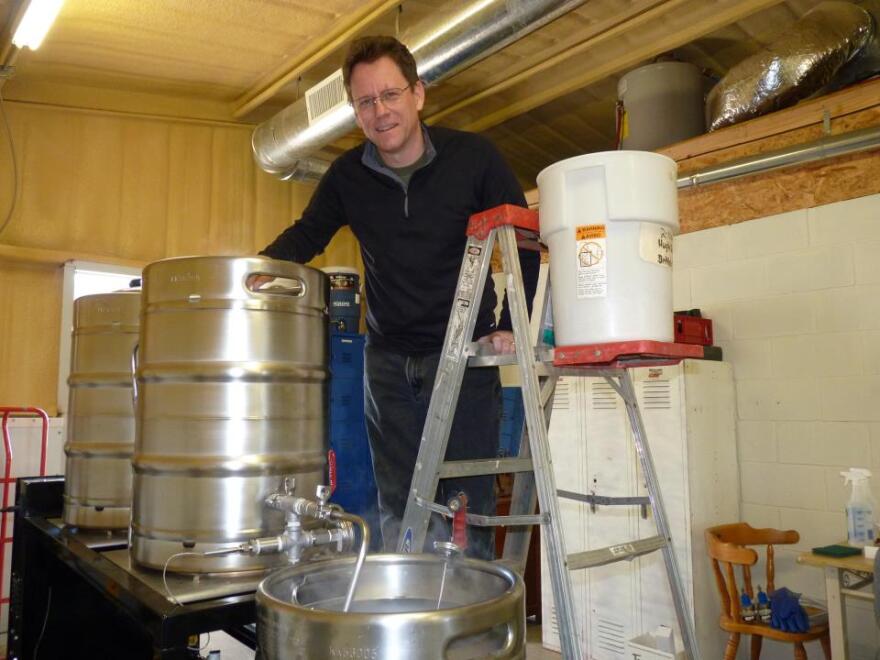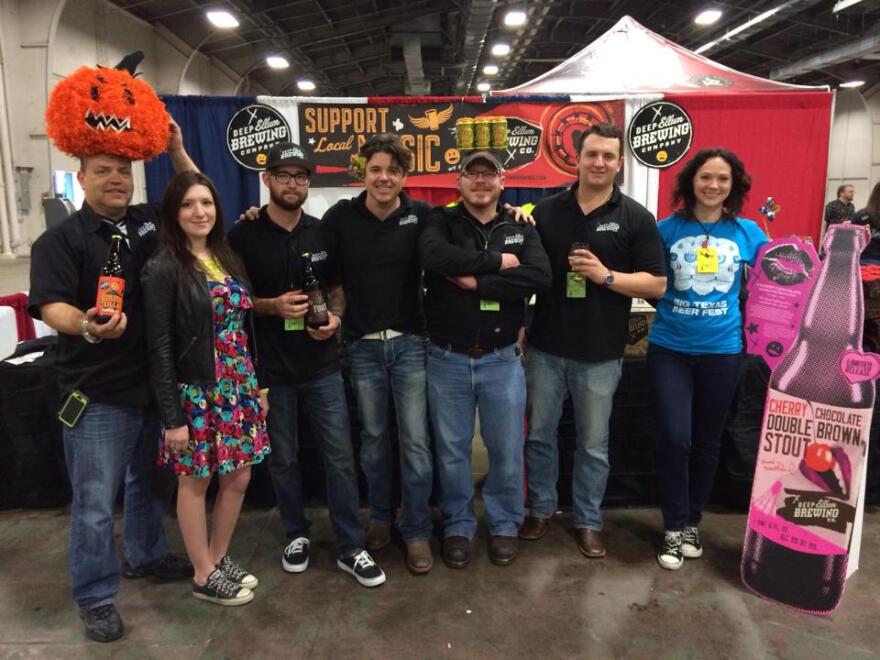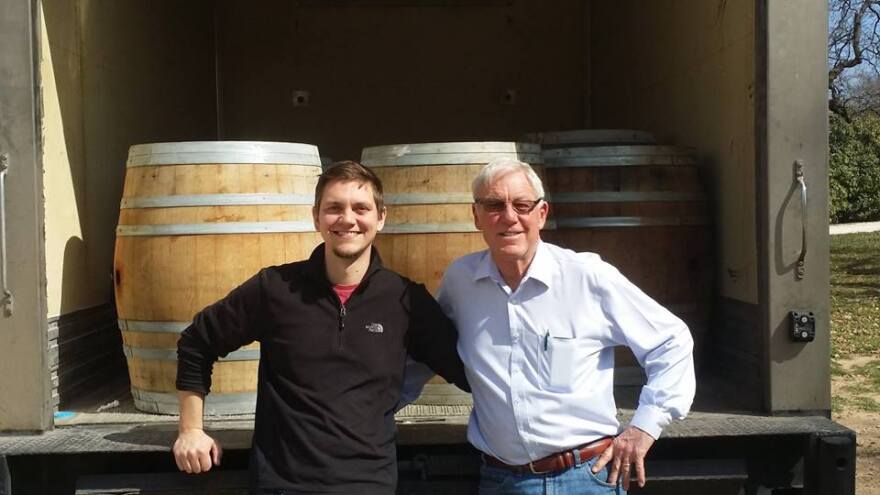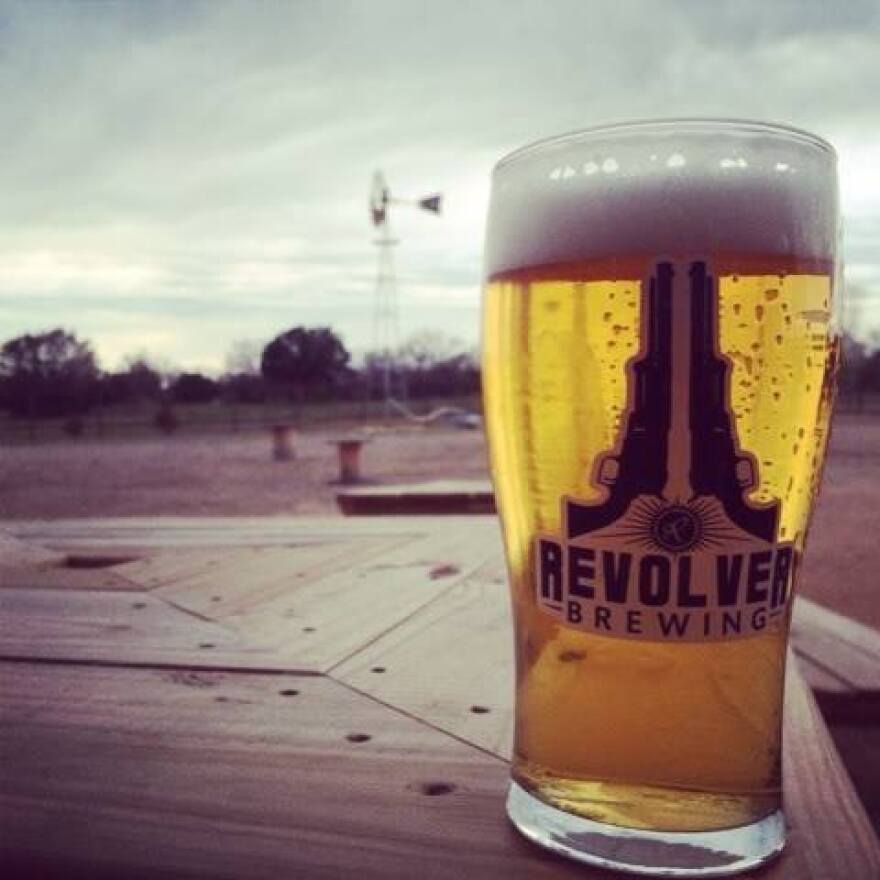In the past few years, North Texas has gone from a brewery desert to one of the country’s hubs for craft beer.
Credit new state laws and imaginative brewmeisters who are getting creative and creating tasty pints. A few North Texas beer scientists recently discussed the craft beer craze on “Think,” KERA’s midday talk show.

How did craft brews take off so fast?
The 2013 State Legislature featured the largest overhaul of the beer industry in 20 years. The Texas Tribune highlights the changes: “The legislation allows small breweries to sell their products to customers to drink in the brewery’s tasting room. The old law prohibited any direct sales by a brewery, requiring samples to be free. Now these breweries can sell up to 5,000 barrels at in-house bars and beer gardens. Additionally, brew pubs, which had been restricted to selling only at the brew pub, can now sell to distributors.”
There’s lots of potential
In 2012, the Texas craft beer industry contributed over $2.3 billion to the Texas economy, according to a study by the Brewers Association, a national non-profit trade association that represents independent craft breweries. Texas ranks No. 2 nationwide, behind California. By 2020, the economic impact could reach $5.6 billion in Texas, according to a study authored by Scott Metzger, a University of Texas-San Antonio economics professor. (He’s also founder and CEO of San Antonio-based Freetail Brewing Co.)

Meet the beer scientists
More breweries are opening across Dallas-Fort Worth – they often serve up samples, along with food and entertainment. They also sell their local brews at restaurants and bottled beers at stores.
Wim Bens with Lakewood Brewing started brewing beer in his East Dallas garage. Grant Wood with Revolver Brewing in Granbury paid his dues with the Boston Brewing Company – the folks who produce Samuel Adams. And what fuels John Reardon with Deep Ellum Brewing? “I’ll accept mediocrity with my food, but not mediocrity with my beer,” Reardon told KERA.
Here are highlights of their conversation on KERA’s “Think:”

Breweries, not taverns
Bens credits the Texas Craft Brewers Guild for making the new legislation happen. The guild “worked for a long time to get legislation passed to put us on par with Texas wineries and make it a little easier for consumers to get our beer,” Bens said.
But these breweries have no intentions of becoming full-blown bars, Wood said. “We’ll give you four samples and you can hang out and listen to a band and have some food," he said. "We’re in the business of making beer, not being a tavern.”
Craft beer is also taking off thanks to restaurants and bars. They’ve embraced craft beer because it "can drive sales for their businesses,” Reardon said. “We’re seeing 20-tap walls.”
North Texas breweries are also doing well because beer drinkers want more choices – and more details about where their beer comes from. “It’s related to a bigger emphasis on the food movement -- local, fresh,” Wood said. “People want the story behind whatever they’re eating. They want to know where it came from. The same thing goes for their beer.”
The brewmasters enjoy bumping into folks who don’t know much about beer. It’s a satisfying feeling introducing someone to a new beer, they say.
But those who drink craft beers like to play the field.
“Craft beer drinkers aren’t necessarily loyal,” Wood said.
“They are quite promiscuous,” Reardon said.

Beer: It’s no longer “alcoholic soda pop”
Wood, who studied food science at Texas A&M, made picante sauce when he left school. He didn’t like the job. His wife kicked him “in the you-know-what” and said: “Go out and do something with your degree.” He got hired at a brewing company doing beer and water analysis. He fell in love with the work.
“Up to that point, I felt like beer was alcoholic soda pop,” Wood said. “You got some -- it went with pizza or a burger. There wasn’t a lot of thought with it. But you’re taking these agricultural products -- hops, malted barley, water – [and you’re] putting them together and creating a product that people love and enjoy. It touched the romantic in me.”

The first batch was really bad
Bens started brewing in his garage in East Dallas.
The first batch?
“God, it was horrible,” Bens said. “It really was bad. But that shouldn’t discourage you. … But what got me into it was it was this kind of nice perfect balance of art and science. That’s what intrigued me. And I stuck with it.”

What’s in a name?
Deep Ellum Brewing has the Dallas Blonde. Lakewood Brewing has the Temptress. Revolver Brewing has the Blood and Honey. How do they come up with such creative names?
“All these breweries are extensions of ourselves,” Reardon said. “At the end of the day, it’s a couple of us drinking beers and spitballing ideas. That’s the beauty.”
“I think of weird stuff all the time,” Wood said. “Most of the names of our beers don’t revolve around the revolver -- pardon the pun. … We’re out in the countryside, out in Granbury, and we try to embrace that country outside of the city attitude without being too aggressive.”

Craft beer’s future
The brewers have formed a fraternity of sorts. They see each other at festivals. They’ve formed a camaraderie. “We’re all in this together,” Wood said. “We’re all making the same thing and there’s a joy in it. We’re helping each other out.”
And there’s room in the market for more breweries. There’s a growing demand for local brews. It seems inevitable more brew scientists will emerge from their home labs and sell their concoctions.
“There are other breweries opening up as we sit here and talk,” Wood said. “There’s still a shocking amount of people who have never heard of any of us.”
“As long as that bar remains high and we strive to make better beer than the next, then Dallas is really going to reap the benefits," Reardon said.
Miss the conversation?
Listen to the KERA "Think" program about craft beer here.
(Photo Credits: Lakewood Brewing Facebook/Deep Ellum Brewing Facebook/Revolver Brewing Facebook/MaxyM Shutterstock.com)







